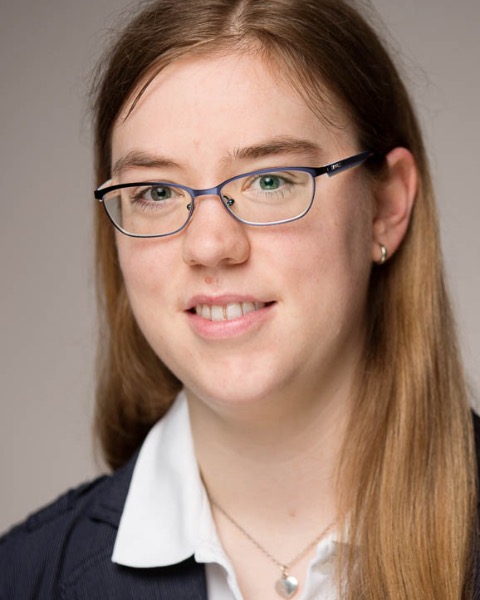General Session
OA-23: Resolving therapy resistance mechanisms in multiple myeloma by multi-omics subclone analysis
Thursday, September 28, 2023
3:50 PM - 4:00 PM EEST
Location: Trianti

Alexandra M. Poos, PhD (she/her/hers)
PostDoc
Multiple Myeloma Section, Department of Medicine V, University Hospital Heidelberg
Heidelberg, Baden-Wurttemberg, Germany
Speaker(s)
Introduction: Intratumor heterogeneity as a clinical challenge becomes most evident after several treatment lines when multi-drug resistant subclones accumulate. With the hypothesis that the characterization of resistance mechanisms at the subclonal level is key to identify common vulnerabilities, we performed a longitudinal single-cell (sc) sequencing study in relapsed/refractory multiple myeloma (RRMM).
Methods: scRNA- and ATAC-sequencing together with whole genome sequencing (WGS) was performed for 15 RRMM patients with longitudinal samples (T1/T2). Tumor subclones were identified based on copy number aberrations in both sc readouts. To match transcriptome and epigenome of each subclone, a WGS-guided clustering approach was developed and combined with mitochondrial DNA mutations. Cell-cell interactions between subclones and the bone marrow microenvironment (BME) were identified using CellChat.
Results: Analyzing the impact of treatment on individual subclones, we found converging adaptation mechanisms in patients with stable evolution or only minor changes in the subclonal architecture. Specifically, 86% (range: 64-96%) of therapy-induced changes in gene expression were shared across individual subclones for each patient and the same was seen for transcription factor (TF) motif activities (93 % shared (range: 71-95 %)). This included a significant upregulation of genes and TF motifs of the NFKB pathway upon MEK/BRAF inhibition and of heat-shock proteins upon proteasome inhibition. Next, we focused on patients with major subclonal changes and found evidence for a role of the BME in differential treatment response. Global gene expression and chromatin accessibility analysis in a patient treated with an MCL1 inhibitor revealed subclonal differences in expression of the cell-cell interaction molecule CD44. According to CellChat, CD44 mediated a subclone-specific interaction with monocytes and dendritic cells that was lost upon MCL1 inhibition. Extending the interaction analysis to all patients with multiple subclones, on average 32 ligand-receptor interactions were predicted per patient. Notably, 20% of them were not shared between subclones. These unshared interactions were mainly mediated by the intercellular adhesion molecule (ICAM) signaling network. Despite this heterogeneity in ICAMs, they still represent a potential treatment target. We found ICAM1 to be significantly upregulated upon treatment (p=0.02), including a patient with ICAM1-mediated interactions in all subclones at T2, which were not detectable at T1. In line with this, we found a higher co-accessibility at the ICAM1 promoter and motif activity for TFs regulating ICAM1 such as IRF4 in all subclones.
Conclusions: Our multi-omics approach of individual subclones integrates multiple layers of resistance. These mechanisms can occur in parallel, which emphasizes the development of strategies that target shared vulnerabilities across individual subclones.
Methods: scRNA- and ATAC-sequencing together with whole genome sequencing (WGS) was performed for 15 RRMM patients with longitudinal samples (T1/T2). Tumor subclones were identified based on copy number aberrations in both sc readouts. To match transcriptome and epigenome of each subclone, a WGS-guided clustering approach was developed and combined with mitochondrial DNA mutations. Cell-cell interactions between subclones and the bone marrow microenvironment (BME) were identified using CellChat.
Results: Analyzing the impact of treatment on individual subclones, we found converging adaptation mechanisms in patients with stable evolution or only minor changes in the subclonal architecture. Specifically, 86% (range: 64-96%) of therapy-induced changes in gene expression were shared across individual subclones for each patient and the same was seen for transcription factor (TF) motif activities (93 % shared (range: 71-95 %)). This included a significant upregulation of genes and TF motifs of the NFKB pathway upon MEK/BRAF inhibition and of heat-shock proteins upon proteasome inhibition. Next, we focused on patients with major subclonal changes and found evidence for a role of the BME in differential treatment response. Global gene expression and chromatin accessibility analysis in a patient treated with an MCL1 inhibitor revealed subclonal differences in expression of the cell-cell interaction molecule CD44. According to CellChat, CD44 mediated a subclone-specific interaction with monocytes and dendritic cells that was lost upon MCL1 inhibition. Extending the interaction analysis to all patients with multiple subclones, on average 32 ligand-receptor interactions were predicted per patient. Notably, 20% of them were not shared between subclones. These unshared interactions were mainly mediated by the intercellular adhesion molecule (ICAM) signaling network. Despite this heterogeneity in ICAMs, they still represent a potential treatment target. We found ICAM1 to be significantly upregulated upon treatment (p=0.02), including a patient with ICAM1-mediated interactions in all subclones at T2, which were not detectable at T1. In line with this, we found a higher co-accessibility at the ICAM1 promoter and motif activity for TFs regulating ICAM1 such as IRF4 in all subclones.
Conclusions: Our multi-omics approach of individual subclones integrates multiple layers of resistance. These mechanisms can occur in parallel, which emphasizes the development of strategies that target shared vulnerabilities across individual subclones.
